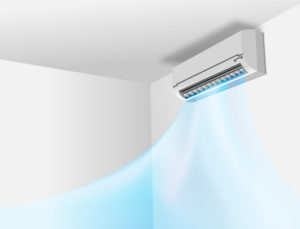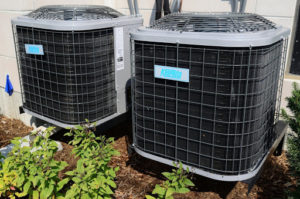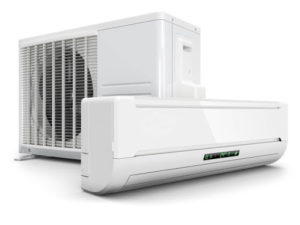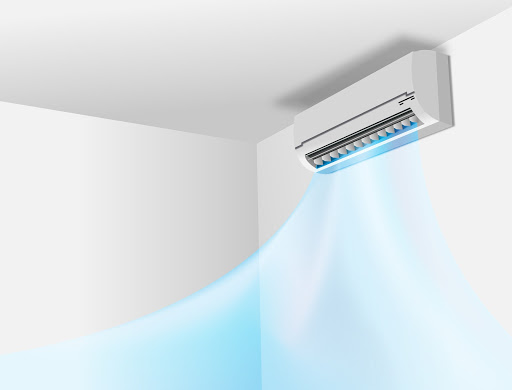Mini Splits vs. Central AC: Which is Right for Your Home or Business?

Searching for an air conditioner that suits you and your family’s needs can be a tricky and confusing task. During your hunt for the perfect AC unit, it’s possible that you have come across two different kinds of air conditioners: ductless mini-split and complete systems. While traditional complete systems are the tried-and-true option, ductless mini-splits have become increasingly popular when it comes to cooling systems. Let’s figure out what the best option is for you.
What is a Complete System?

There are two types of complete systems:
A central air conditioning system consists of one large AC unit (located outside of the home), and a series of ducts through which cooled air travels and is circulated throughout the household. Central AC systems can be further divided into two subsets: packaged or split-system.
- A packaged system combines the air conditioner, evaporator, condenser, and compressor into one large unit that is often placed either on a concrete slab or on the roof of the home.
- The components of a split-system central AC include an outdoor metal cabinet, which houses the condenser and compressor, and an indoor cabinet, which contains the evaporator and furnace or heat pump.
Advantages of Complete Systems
-
- Aesthetics: Central air conditioning systems are less visible, both indoors and outdoors. The outdoor unit can be concealed with a fence or landscaping, and indoor vents will be virtually unnoticeable.
- Construction: If your home has a duct system already in place, going with a complete system would be a more cost effective option.
- Home Size: Most ductless systems do not have the power to cool large homes. Large homes include those that are at least 2,000 square feet.
- Cost: Though mini-split systems have a longer lifetime than central air systems, the initial installation cost for central air conditioners is lower. The U.S. Department of Energy estimates that central air systems cost up to 30% less in terms of installation expenses.
- Installation: Contractors must precisely judge locations, measure, and install indoor mini-split units. Indoor units that are too large or incorrectly placed can result in something called short-cycling, which wastes energy and leaves you with inadequate temperature and humidity control.
- Air Quality: Though mini-split systems have air filters, they are not as powerful as those of complete systems. This means central systems have a higher efficiency when it comes to purifying the air in your home and filtering out particles such as allergens, dust, and odors.
What is a Mini-Split System?

Though mini-split systems are a fairly new technology in the air conditioning world, they have become increasingly popular over the years. Mini-split systems consist of an outdoor condenser and an indoor fan unit. The indoor unit is connected to the outdoor unit via a conduit, allowing refrigerant to pass through and cool the area. These systems are available in single and multi-zone units, allowing you to cool your home in the areas you need.
Advantages of Mini-Split Systems
- Noise: Since the compressor component of mini-split systems is located outside of the home, the only noise you will hear will be from the fans.
- Ductwork: Mini-split systems do not require ductwork, which eliminates the costs associated with duct repairs and maintenance
- Installation: Due to the nature of mini-split systems, the only requirement for installation is a very small hole through a wall to run the refrigerant line. Some homeowners are able to run a line throughout the entire household, eliminating the need for multiple compressor units.
- Control: Central air systems are controlled by one thermostat located in a central area of the home, which means every room is the same temperature. Mini-splits, however, offer a more customizable temperature control option where the homeowner can set certain areas to a different temperature than others. This is a great money saving tool, not to mention the ability to accommodate each occupant’s temperature preferences.
Long Term: Mini-split systems often last around 20 years, while central air conditioning systems typically have a lifespan of 12-15 years.

Which System is Right for Me?
Every household is different, and the decision on whether to consider a mini-split or a complete system is entirely dependent on each individual’s needs. Our HVAC professionals at TemperaturePro are highly trained, and happy to help you decide which system is best for you. We’re always here and happy to assist you with any questions, inspections, and installations. Call you local TemperaturePro today!









